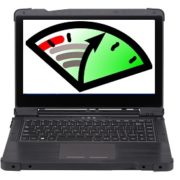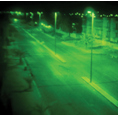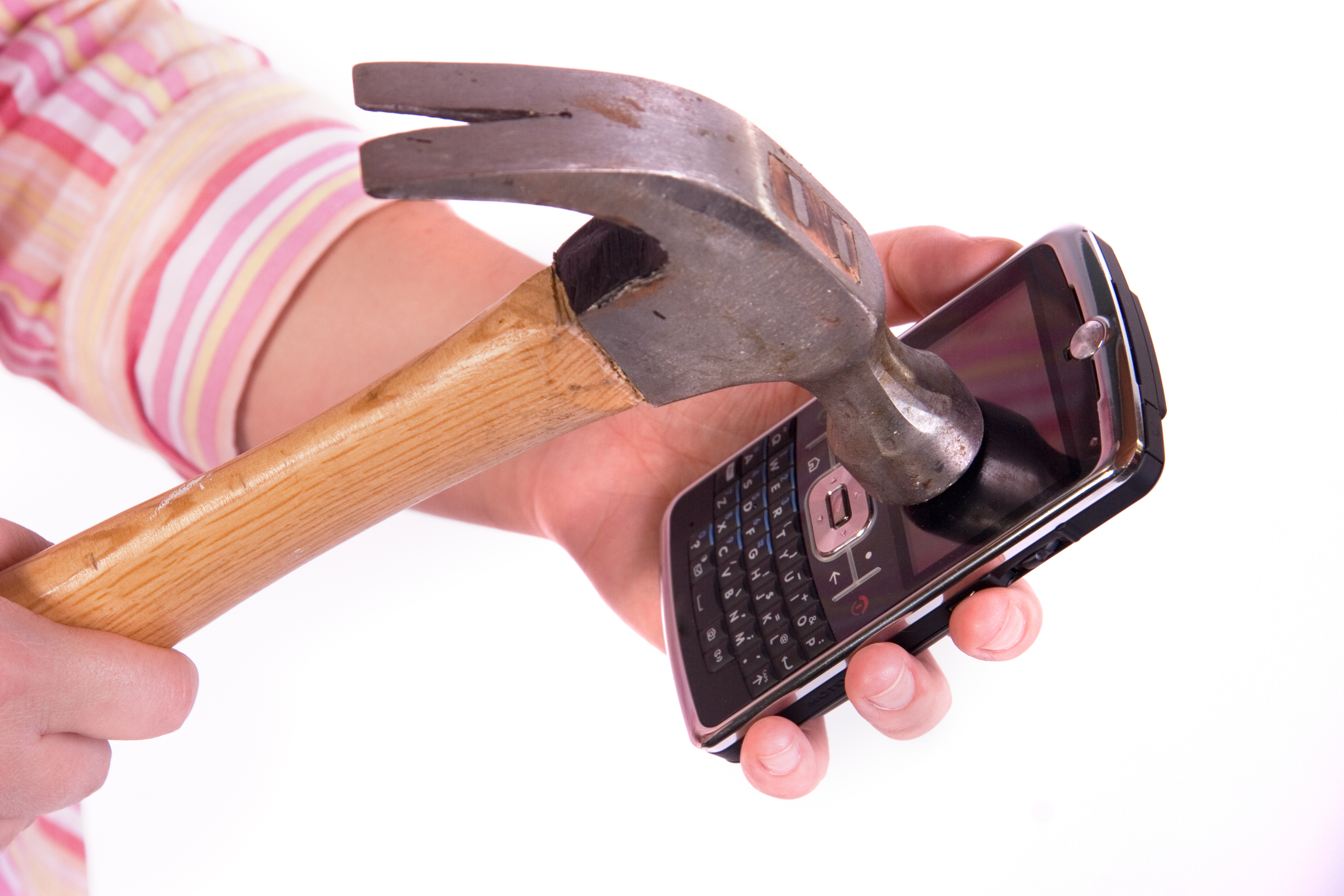File this under things that make America great. Evidently, some big box stores sell impressively sized barrels of a food-like substance called “cheese balls.” No one can figure out what to do with them (eating them is apparently out of the question). A YouTube enthusiast, NightHawkInLight, has an extensive video channel featuring do-it-yourself projects, such as making […]
Biometrics is of one the world’s most important emerging technologies. They are used to accurately identify criminals, disburse benefits, manage events, protect financial transactions, authorize access, and fight fraud. If you are considering buying a biometric device, here are a few questions that you need to ask.
1) Do you need to read this article? Most biometric transactions are described as verifications, i.e. are you who you say you are? An example would be laptops and smartphones that have a fingerprint sensor that identifies authorized users. Verification can be performed by relativity simple technologies. A much more challenging application is enrollment, in which biometric information from an individual is captured and stored. Purchasing and deploying an enrollment device involves a very complex evaluative process, poses numerous risks, and may incur unforeseen expenses. If you are looking for a mobile enrollment device, this article is for you.
2) Do you need an enrollment device that is mobile? Mobile biometric devices save time, money, and hassle. Consider the following three scenarios:
• Forward-based soldiers enrolling the inhabitants of a village.
• Policemen enrolling a suspect in the field.
• Event managers enrolling clients at an entertainment/sports venue.
In each of the above examples, mobile frees the workers from the chore of ferrying the enrollees back to a base/station/office to use a stationary biometric device. For most applications, the mobility of an enrollment device is an enormous advantage.
In spite of the benefits, many project managers discard the possibility of a mobile biometric device that has enrollment capabilities, because they believe the technological difficulties are too great or costly. This is unfortunate because economic, practical solutions are available.
3) What modality do you want? Biometric modalities include fingerprint, palm veins, facial recognition, DNA, palm print, iris recognition, retina and odor/scent.
By far and away, the most established, popular, and practical modality is fingerprinting. Fingerprints have the largest, most complete databases available, which is an enormous advantage for the purposes of identification. However, fingerprints have their problems. The fingerprints of the elderly and farm workers have been known to become so worn that they are unusable. This is one reason that it is strongly recommended that your biometric device is multimodal. In addition, using more than one modality reduces the problems of noisy data, “spoofing”(fraud), and unacceptable error rates.
Iris and facial recognition are popular complementary modalities to fingerprinting, but you need to evaluate the specific needs of your application. For example, police like cameras, so they can take pictures of gang tattoos. If you are deploying a biometric device for financial applications in Japan, palm vein, which is popular there, would warrant serious consideration.
4) Do I need a device with multiple fingerprint enrollment capability? Experts strongly recommended enrolling more than one finger. Minor injuries and temporary disabilities can compromise the usability of captured images of a single finger.
5) Do you need access to large databases? This really depends on your application. For example, I use a fingerprint sensor to obtain access to my gym. I assume that my gym doesn’t care about interacting with larger databases that local and national governments use to track criminals. They only want to compare my fingerprints with their client list. However, police departments, FBI, and the Department of Homeland Security need to exchange data with other government databases.
Keep in mind special requirements for specific applications. For example, police departments may need compliance with FirstNet standards. Military applications may need special encryption capabilities. More than one buyer has had to replace their entire line of recently purchased biometric devices because they did not meet the requirements for interaction with large databases.
6) What are the requirements for accesses to national and local databases? The most commonly used national database, the Integrated Automated Fingerprint Information System (IAFIS), has very strict standards for the Electronic Fingerprint Templates (EFT) that it accepts. Standards include FAP-45 (Appendix F) and PIV. FAP-45 is the stricter “high-throughput” standard; it is the one that is most likely to affect busy institutional use.
7) How important is the quality of the fingerprint images that my device captures? Very. National Institute of Standards and Technology (NIST) research revealed that image quality directly impacts identification match accuracy. By deploying the highest quality sensors on the most reliable platforms, you can reduce missed identifications/verifications of a subject, additional secondary workload processes, and overall examiner workloads.
8) What kind of fingerprint sensor should I look for? Get a device with a Light Emitting Sensor (LES) sensor. LES multilayer, polymer composite film resists abrasion, operates at extreme temperatures, and isn’t affected by fog or condensation. Unlike traditional optical sensors, direct and bright sunlight do not diminish its ability to capture high quality fingerprint images. Compared to old-fashion systems, the LES sensor is less sensitive to oils left behind from previous users; other sensors need to be cleaned after each capture.
9) What kind of mobile platform should I look for? Get a rugged device; preferably one with a high IP rating and has met military environmental standards, such as MIL-STD 810. You will spend more on the initial cost, but will save in the long run on repair, lost data, downtime, and lost work hours. Public safety officers, relief workers, and warfighters work in harsh environments. They need devices that can get dirty, get wet, take a beating, and still successfully operate.
If you can answer the above questions, you are ready to get started in your search for a mobile enrollment device. Of course, there are many other factors to be considered. If you have any questions, feel free to contact one of AMREL Application Engineers at (800) 8826735.
For over 30 years, AMREL has been a leader in developing highly reliable, fully rugged mobile solutions that operate in the most demanding environments. We supply more than multi-modal handhelds for collection, enrollment, and identification; we provide a generation of expertise. We customize even low-volume orders to craft solutions that are perfect for your needs. See our complete line of biometric devices here.
Short video shows how easy it is to change the hard drive, battery, and CD-ROM unit of the rugged AMREL ROCKY RT9.

 Night Vision Imaging System(NVIS) enables US military forces to enhance situational awareness, increase mission flexibility, and maintain battlefield dominance. Also, night-vision goggles (NVG) are cool. If you don’t believe me, buy one, show it to your friends, and see how quickly they try to grab it out of your hands.
Night Vision Imaging System(NVIS) enables US military forces to enhance situational awareness, increase mission flexibility, and maintain battlefield dominance. Also, night-vision goggles (NVG) are cool. If you don’t believe me, buy one, show it to your friends, and see how quickly they try to grab it out of your hands.
No matter how cool NVG are, military personnel need to be able to use them with other equipment. For example, depending on the intended application, computers must comply with aviation and Army night-vision specifications (the standards governing cockpit equipment and the units used by ground pounders are different).
Night-vision compatible computers must be simultaneously visible and not visible. The display should have a setting that enables visibility through NVG, but also have another setting that allows normal light use. Visible light must be dimmed during night-vision mode, not only so the signal-to-noise ratio is reduced, but also so the enemy cannot see the computer. To avoid detection by enemy NVG, a computer must filter its infrared and UV emissions as well as its visible light.
In order to meet military standards for night vision compatibility, there are two methods of decreasing the light emitted from a computer platform. The first method is to have a built-in switch that dims the keyboard and display. In the photograph below, the switch is conveniently located in the front.
The second method of achieving night vision compatibility is to apply a special filter to the display. Filters can be attached with snap-on clips or fastened with adhesive. The adhesive is not necessarily permanent; filters can be made so that they can be repeatedly removed and applied. Typically, all night vision compatible filters are green.
Of course, both the built-in and add-on filter methods can be simultaneously used. Each method of dimming emissions has their advantages and disadvantages (see chart below).
Night Vision Filters vs. Built-in Dimming Switch
AMREL offers night vision compatible platforms that have been proven in the field by the German military. Whatever you require, AMREL has a great deal of experience in modifying computer platforms to meet military standards.
Surprise
When AMREL did its annual review, we were surprised by one finding: there was a marked uptick in the number of people buying rugged computers for personal use. While there has always a few folks who bought rugged platforms for themselves, our traditional customer base has been overwhelmingly enterprise oriented.
Why this sudden interest in rugged computers by consumers? Should you be considering a rugged computer for yourself or your organization?
 This handy-dandy animated infographic gives tips for evaluating rugged handhelds. View it here.
This handy-dandy animated infographic gives tips for evaluating rugged handhelds. View it here.
 As I write, 3000 air safety inspectors have had their positions deemed “non-essential.” The Center for Disease Control’s staff for tracking food borne illnesses has been cut by more than half. Bars in Washington, D.C. are expanding hours for idle workers. From these random government-shutdown events, we can conclude that that furloughed workers are being advised: don’t fly, don’t eat strange food, stay in town, and get drunk.
As I write, 3000 air safety inspectors have had their positions deemed “non-essential.” The Center for Disease Control’s staff for tracking food borne illnesses has been cut by more than half. Bars in Washington, D.C. are expanding hours for idle workers. From these random government-shutdown events, we can conclude that that furloughed workers are being advised: don’t fly, don’t eat strange food, stay in town, and get drunk.
What about the rest of us?
As attractive as this advice is, it is not the best strategy for people who do business with the Federal government. How should Defense vendors and other providers deal with these shutdowns?
Notice the plural “shutdowns.” There is a very good chance that by the time you read this, the Federal government shutdown will be over. However, given the logjam that characterizes modern politics, an unwelcomed repeat performance is more than possible.
 The hot days of summer are associated with swimming, BBQs, and other good times. However, it is no fun when your laptop overheats. Here are a couple of things to do when your computer becomes too hot to handle: Read more
The hot days of summer are associated with swimming, BBQs, and other good times. However, it is no fun when your laptop overheats. Here are a couple of things to do when your computer becomes too hot to handle: Read more
Suppose you’re stuck in the middle of nowhere with nothing, but a broken smartphone? Don’t despair! The good folks at ansonalex.com have info that could save your life. Check out the infographic below:
American Reliance, Inc.
789 N Fair Oaks Ave,
Pasadena, CA 91103
Office Hours
Monday-Friday:
8:00 am – 5:00 pm PST
Saturday: Closed
Sunday: Closed
Main: +1 (626) 482-1862
Fax: +1 (626) 226-5716
Email: AskUs@amrel.com
Blog Posts
Mobile Biometric Solutions
Mobile Biometric Smartphones & Tablets
BioFlex S® Commercial Smartphones
BioSense AT80B | 8″ Android Biometric Tablet
BioSense PA5 | 10.1″ (Gen 2) Android Biometric Tablet
BioSense PA5 | 10.1″ Android Biometric Tablet
BIOPTIX PM3B | 7″ Windows Biometric Tablet
BIOPTIX PM5B | 10.1″ Windows Biometric Atom Tablet
















